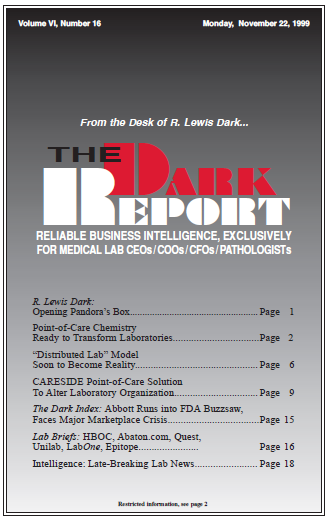CEO SUMMARY: During the 1990s, laboratory automation was expected to have the greatest impact upon the structure and organization of laboratories. However, like the famous race between the tortoise and the hare, it’s our prediction that point-of-care testing technology, quietly advancing in the background, will have a more revolutionary impact on the way clinical laboratories …
“Distributed” Lab Model Soon to Become Reality Read More »
To access this post, you must purchase The Dark Report.


